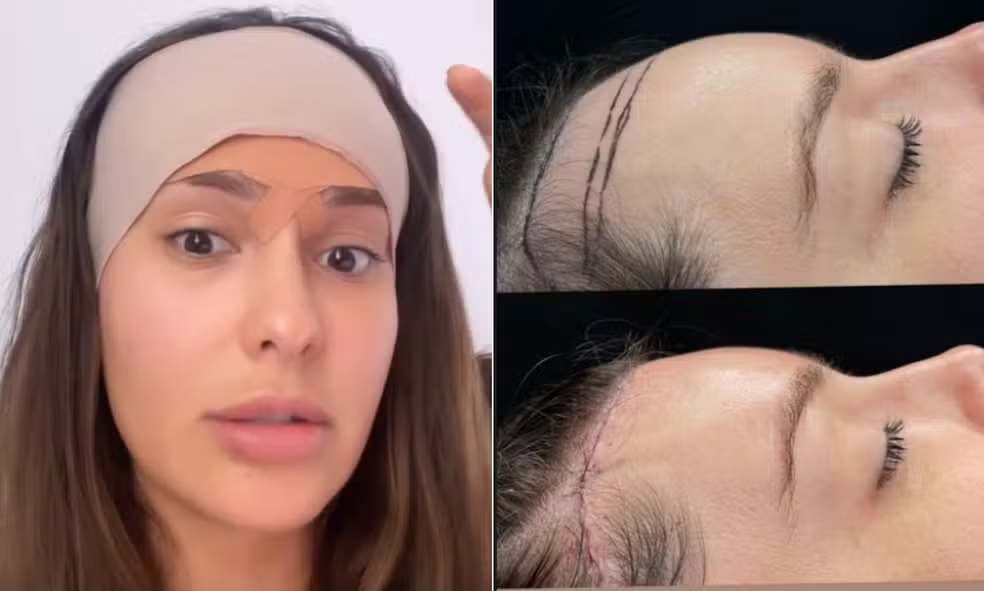What Are the Risks of a Facelift and How to Minimize Them?
Receiving questions about the risks of a facelift and neck lift is very common in clinics and on social media. Questions such as “Doctor, what is the risk of complications from this surgery?” or “Can I die during a neck lift?” reflect a genuine concern for patient safety.
In this article, you’ll learn in plain language what the main risks of a facelift are, what you can do to minimize them, and how to ensure a safer result.
Every Surgery Has Risks — Understand This First
Just like reading a medication insert, every surgical procedure carries an inherent risk. In the consent form you sign before surgery, all possible events are listed — even rare ones. It’s essential to read and understand each item, because that information is part of making an informed decision.
Choosing a facelift or a neck lift means understanding there is an associated risk — although low when the surgery is well indicated and performed by a specialist, it is not zero.
What Influences the Risks of a Facelift
Risks can be related to both the patient and the procedure itself. Among the patient-related factors are:
- Previous injectables: poorly applied or permanent fillers may complicate surgery and increase the chance of complications. Your surgeon must know exactly what has been injected to remove or manage it safely.
- Pre-existing conditions: diabetes, high blood pressure, or heart and respiratory issues must be well controlled before surgery.
- Harmful habits: smoking is one of the biggest enemies of healing. It increases the risk of skin necrosis, hematomas, and infections.
- Poor nutrition: nutritional deficiencies can impair the body’s recovery.
Procedure-related factors include:
- Choice of surgical facility: operating in a hospital or clinic properly equipped and licensed by health authorities is essential.
- Experienced medical team: a board-certified plastic surgeon and a trusted anesthesiologist are key to reducing risk.
- Comprehensive pre-operative evaluations: blood tests and imaging help identify potential problems beforehand.
How to Minimize the Risks of Facelift Surgery
To improve safety and recovery, follow these recommendations:
- Choose a plastic surgeon with proven experience in facelifts and neck lifts. Research their credentials, memberships, and previous results.
- Be completely honest about your medical history. List all medications, allergies, and previous aesthetic procedures.
- Control chronic diseases. Follow your doctor’s treatment plan before and after surgery.
- Quit smoking in advance. Ideally stop at least four weeks before the procedure.
- Maintain a balanced diet. Proper nutrients aid healing and reduce complications.
- Strictly follow post-operative instructions. Rest, take prescribed medications, and attend all follow-up visits.
When the surgeon and patient work together, safety increases and final results are much more satisfying.
The Surgeon’s Role: Safety First
It is the surgeon’s responsibility to:
- Choose a safe, well-equipped surgical environment.
- Work with a skilled anesthesiologist committed to patient safety.
- Request all necessary pre-operative tests.
- Perform the surgery following best practices and up-to-date techniques.
This shared responsibility between patient and medical team is what makes the procedure more predictable and safe.
Conclusion: Facelift Surgery Is Safe but Requires Care
Facelifts and neck lifts are safe procedures when performed by qualified professionals, in appropriate facilities, and with patient cooperation. Understanding the risks and following medical recommendations is the first step to a successful surgery.
Remember: plastic surgery is a partnership between doctor and patient. Choosing a trusted specialist, controlling risk factors, and following all instructions is the safest path to natural, long-lasting results.






